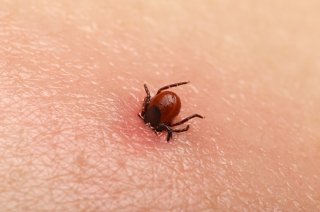
Project
Tekenradar.nl (Tick radar)
Wageningen University and the National Institute for Public Health and the Environment (RIVM) launched Tekenradar.nl in spring 2012. Tekenradar.nl allows people, that have been bitten by a tick, to participate in research to tick bites and Lyme disease. People can report a tick bite or an erythema migrans (red ring). With this analysis the team hope to determine what the risk is of getting ill after a tick bite.
A snapshot of the project
Wageningen University already started reporting tick bites with the public in summer 2006 in the context of the Natuurkalender citizen science network. As it was asked to citizens in what environment and during which activity, they were bitten by ticks we were able to determine that one third of the tick bites were obtained in gardens. From summer 2006 till 2016, there was an involvement of 25 groups of volunteers to catch ticks monthly on fixed transects of 200 meter in the forests.
The Tekenradar.nl has the following objectives:
- Providing state of the art information on the expected activity level of ticks in The Netherlands. We expect that more people will show improved preventive behavior.
- Increasing knowledge on how often and under which conditions a tick bite or an erythema migrans leads to (severe) health problems due to Lyme disease, and how often long-lasting problems develop.
- Determine what the risk factors are for being bitten by ticks and for developing acute and/or long-lasting complaints.
- Measuring the impact of Lyme disease on the demand for health care, sick leave and the quality of life.
- Inform the general public on the (increase of) the number of Lyme disease cases in The Netherlands to make them more aware of the risks.
- Provide information on ticks and Lyme disease to the general public.
- Communicate actively and frequently the results of Tekenradar.nl to the general public and specific target groups.
The results of the project
Since the launch of Tekenradar.nl in 2012, more than 60 thousand tick bites have been reported, with between 7 and 10 thousand tick bites reported each year. More than 35,000 people have created an account to report tick bites and Lyme disease and to fill in survey questionnaires. There is a clear influence of the tick season on the number of reports, with June and July usually having the highest number of tick bite reports, averaging about 50% of the annual tick bite reports. In addition, the interest in the site also affects the number of reports, for example at times when the media give attention to ticks and Lyme (Tekenradar.nl, 2022).
By our frequent communication to society, we attracted lots of media-attention. As a result, we were able to inform many people on the risks of ticks and tick-borne diseases and could inform them on how to deal with ticks.